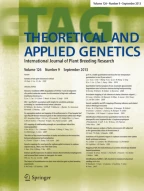Abstract
Commercial scale fingerprinting of potato cultivars is made difficult by the need for speed, reliability and the ability to distinguish between large numbers of genotypes. There are also problems in extrapolating the results of small experimental studies to predict the performance of techniques or primers for larger applications. The potential of ISSR-PCR for fingerprinting purposes was evaluated using four primers on 34 potato cultivars. The complex band profiles generated were reproducible between repeat PCRs, DNA extractions, electrophoreses and gel scorings. Two primers were each able to distinguish all cultivars. The combined use of any two of the four primers also allowed complete diagnosis. It is concluded that ISSR-PCR provides a quick, reliable and highly informative system for DNA fingerprinting that is amenable for routine applications. Two possible correlates of the ability of primers to distinguish between genotypes were then examined. Marker Index failed to correlate significantly with genotype diagnosis, but a strong and seemingly linear relationship was observed between Resolving Power of a primer and its ability to distinguish genotypes (r2=0.98). Resolving Power of one or a pair of primers was found to provide a moderately accurate estimate of the number of genotypes identified. Possible implications for future studies on DNA fingerprinting are discussed.
Similar content being viewed by others
Author information
Authors and Affiliations
Additional information
Received: 7 May 1998 / Accepted: 15 July 1998
Rights and permissions
About this article
Cite this article
Prevost, A., Wilkinson, M. A new system of comparing PCR primers applied to ISSR fingerprinting of potato cultivars. Theor Appl Genet 98, 107–112 (1999). https://doi.org/10.1007/s001220051046
Issue Date:
DOI: https://doi.org/10.1007/s001220051046
